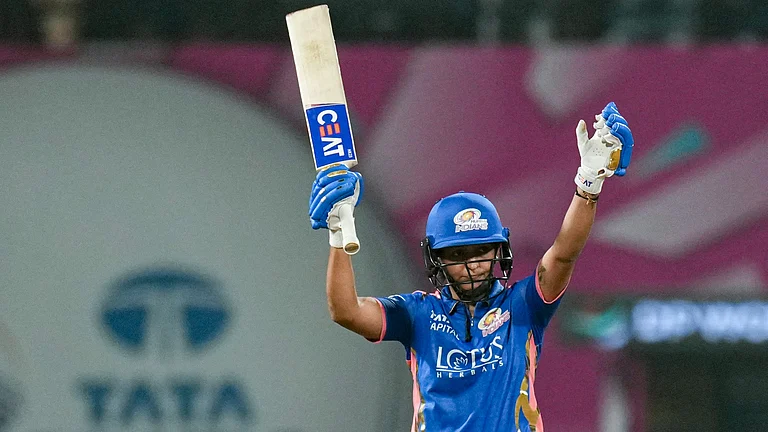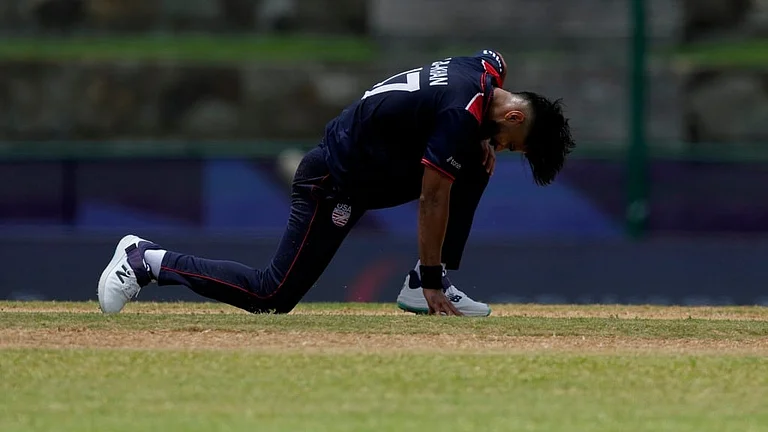Battered by unprecedented rains and floods, Himachal Pradesh is struggling to come to terms with the massive devastations. Around 111 persons have lost their lives and massive damage has been caused to the infrastructure — national highways, roads and water supply schemes. Chief Minister Sukhwinder Singh Sukhu has taken the command in his hands to organise the rescue and relief measures. When the Indian Air Force expressed its inability to evacuate 299 tourists stranded at Chandratal (14,100 feet) due to heavy snowfall in Lahaul-Spiti, he took the front to save their lives. The task was successfully accomplished within 22 hours. Ashwani Sharma of Outlook spoke to the Chief Minister on the situation in the state, rescue and ongoing relief operations.
What is the extent of damage due to torrential rains in Himachal Pradesh?
It’s colossal, unimaginable. The rains have surpassed the past 50 years' record. I have not seen such a heavy and torrential downpour in my memories. The data provided by MeT itself suggests a record 223 mm of rainfall was received between July 7 to 11 – almost 30 per cent of the total rainfall received during monsoon in the state. Eventually, there were massive floods in the rivers – Beas and its tributaries – that wreaked havoc, smashing whatever came in the way. The road connectivity was completely snapped. National highways connecting Chandigarh to Manali and Parwanoo–Shimla literally have vanished or got washed away, and landslides and rockslides affected the mobility of tourists. Drinking water, power supply and mobile phone connectivity also collapsed.
You have projected losses to the tune of Rs 7000 to 8000 crore. Is that true?
This is just an initial estimate. The number of deaths may not be very high because the rains happened mainly during the daytime. This gave time to the people to escape unforeseen events. Those who died died due to landslides, accidents and house collapse. The total number of deaths so far is 111.
How is the situation now?
The situation is certainly not good. Our national highways particularly Chandigarh-Manali, Parwanoo-Shimla, have almost been erased. A nearly 100–year-old bridge near Pandoh got totally damaged, and another 50-year-old bridge at Aut in Kullu has also been washed away apart from a dozen other bridges. Thung — an area in the interior of Mandi suffered huge damage due to cloud bursts and mudslides. The connectivity to Shimla and Manali is restored only temporarily. So is the water supply and power in Kullu. We have hired additional manpower for restoration works and deputed special teams to restore emergency services like drinking water, telecom services, transport and power.
Was the biggest challenge to evacuate and rescue 70,000 tourists stranded in Kullu-Manali, Kinnaur and Spiti?
Yes! Every peak season lakhs of tourists arrive in the state. When any natural calamity of this scale happens, we face the test of time. I can say with pride that we did not let a single casualty happen. It was one the largest operations in the country to ensure that the tourists return to their homes safely. We rescued and evacuated 70,000 tourists and 15,000 vehicles, within 24 hours. Of these, 60,000 were in Manali and far-off locations like Kasol, Tosh, Manikaran etc. Thirty tourists were evacuated from a hotel at Kasol, which got submerged in the water. We reached out to every single tourist through every channel viz mobile phones, satellite phones, helpline numbers, control rooms and police personnel on the ground.
There are messages of gratitude and viral videos on social media to thank you for evacuations and rescue. What do you have to say?
It’s true. I was at Hamirpur when the rains started turning scary. Without loss of time, I held an emergency meeting with all DCs and SPs via video conference. I asked them to leave offices and reach out to affected families. We issued helpline numbers. The moment the rain stopped, I decided to travel to Kullu – the worst affected district. I camped there for 60 hours, visited affected areas, met victim families and got them shifted to shelter homes. Never in the past, such prompt rescue operations were carried out after any natural calamity, flood or cloud burst.
How did you plan the rescue operation at Chandratal?
While I was travelling in flood-hit areas in Kullu and Mandi, I got a message of about 290 people stranded at a height of 14,100 feet in the camps at Chandratal. It was snowing heavily. The temperature had dipped down to minus four to six degrees. All routes were blocked. The local administration was unable to do anything. The IAF helicopter flown to Chandratal for evacuation, returned as it could not land on soft snow. A second attempt was made and seven persons, including a child and six elders, were airlifted in very dangerous conditions. The IAF refused to take risks and abandoned the operation.
Thereafter, what strategy did you adopt?
First, I did an aerial survey and landed at Losar. I decided to lead the ground teams myself. But, my doctors advised against it due to my health issues. I took a decision to assign the task to Revenue Minister Jagat Singh Negi and asked Chief Parliamentary Secretary Sanjay Awasthi to assist him. They started their journey at 3 pm and reached Chandratal at 2 am braving snow storms and walking on frozen snow. Snow clearance machinery was put in action to open the road. I was also awake and kept monitoring their movements. Early the next morning, the movement of vehicles started. All tourists were evacuated safely. Many tourists hugged me, cried and even smiled in their safe rescue. I thank both the ministers, the team of officials and drivers who risked their lives to successfully drive stranded tourists. They were from Gujarat, West Bengal, Maharashtra and also the southern states.
Prime Minister Narendra Modi spoke to you and assured all help possible. Has any help reached the state?
I am thankful to PM Modi ji for his concerns on grave natural calamity. I have made a demand of Rs 2,000 crore from the Centre. Only a small amount of a few crores have been sanctioned for Himachal Pradesh so far — which is even less than what Uttarakhand was granted from the National Calamity fund. We want the Centre to declare it a national calamity.
How has been the opposition BJP's role?
BJP National President JP Nadda spoke to me over the phone and he appreciated the way the state government has responded to the situation. He and the Union Minister for Information and Broadcasting Anurag Thakur have visited affected areas. Both have spoken in favour of the government. But their local leadership has chosen to play politics. Let people give them replies.
The experts say unprecedented floods and damages were not the result of natural calamity, it was a manmade disaster. What do you have to say?
There is certainly a link between development and ecological degradation. There have been floods and landslides happening even before this. But why such a devastating flood fury this time? Once we get down to business, we will try to analyse the factors. Few say it is also a result of climate change in the Himalayas, while others blame it on the development. We will get a study done.
Your PWD minister Vikramaditya Singh has claimed that illegal mining in the river beds is a cause of the devastation. Is it true?
We have taken steps to check illegal mining. As I said, we will ask the experts to suggest long-term measures for preventing such a situation in the future.
Punjab Chief Minister Bhagwant Mann had mocked you for asking to share in the river water and now facing floods. What do you have to say?
We are fighting an unprecedented natural calamity. It's time for everyone to help us, not ridicule.


























